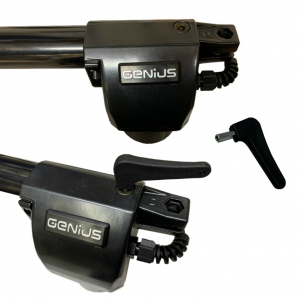How Do Electric Gates Work During A Power Cut?
If there’s no electricity, how do electric gates work in a power cut? Obviously, they can’t.
So, what can you do to avoid being trapped inside or outside gates that won’t open? Or how do you operate them without power?
There are two commonly used methods to operate electric gates when the mains electrical supply is cut. It may be that workmen digging up the road have turned off the power to a few houses for a short time. Or there could be a genuine power cut over a wider area.
Whatever the cause, you need to know that you can get in or out through your powerless gates.
Can Electric Gates Work Without Mains Power?
In the first method you set up an alternative power supply. This gives you a way to run your gates for a few times when the mains supply is cut off. Usually, this is a solar powered option where a solar panel charges a battery. Then the battery can run the gates a few times before it is discharged. There’s not enough sunlight in the UK to completely run electric gates without enormous solar panels. But in an emergency when the mains supply to your gates is cut off, solar power will run your gates for a few cycles of opening and closing.
We recommend the second alternative for all gate automation systems. It’s called manual release, and it does what it says on the tin. During a power cut, you can manually operate your gates thanks to a manual release system.
Why Can’t I Just Push My Gates Open Or Closed?
Under normal circumstance, electric gate motors hold gates in position when they stop. This means that they provide significant resistance to you manually moving the gates. In a power cut, safety devices like magnetic locks will disengage. Then, it’s only the motors holding the gates in place. This is what they are designed to do.
If you hit a gate with a vehicle, the motors resist moving the gate. Inevitably, this means that the gates, motor mounts and arms or gears get damaged. If you try to move gates manually, you’re unlikely to move them much. But even if you can apply so much force through leverage from the latch end of the gates, you’re more likely to damage something before the gates move even a tiny bit.
Manual Release Systems
Manual release systems are mounted between the gate and the motor. They let you partially disconnect the motor from the gate. Then, you can move the gate manually without damaging the motor or its mechanisms. You still have to push the gate quite hard, but this is a safety feature. A gate that swings on its hinges freely is a large, heavy and potentially dangerous thing. A level of resistance to its free movement keeps things under control and safe.
Disengage a manual release system and you can move your gates by hand. You can carefully and slowly open or close the gates manually. When you’ve moved them into the new position, you lock the manual release system. Then, the motors hold the gates safely in place even without power.
Manual release systems need a key so that only the homeowners or a gate automation engineer can unlock them. This ensures that no-one can unlock your gates without your permission and push them open from the outside.
Tell anyone who uses the gates where you keep your keys how to use the manual release system. It’s also a good idea for you to operate the manual release system every few months. This ensures that it works freely if you ever need it.
As with all insurance, you might never need manual release systems and solar power back-up. But if there is a power cut, knowing that you have them is reassuring. Not having either or both can cause you so many problems.






 iStock pbk-pg
iStock pbk-pg ursula page photography
ursula page photography